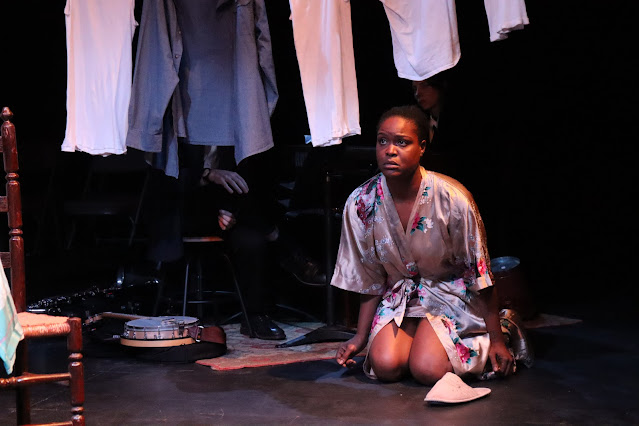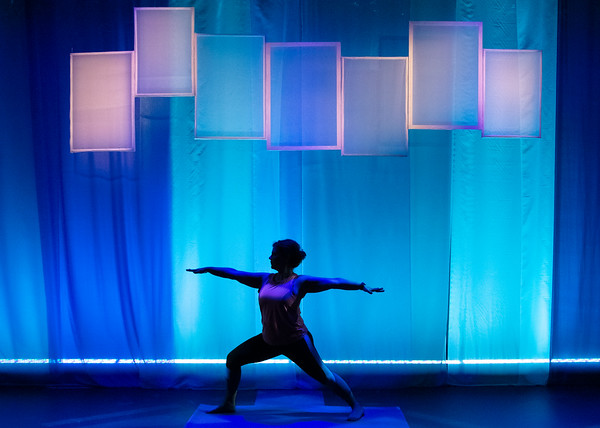Review: "A Drag Is Born" Doesn't Need Words to Speak Volumes
A Drag is Born
Created and performed by Edu Díaz
Directed by Rachel Resnik
Presented at Playhouse 46 at St. Luke's
308 W 46th St., Manhattan, NYC
July 6-14, 2024
 |
| Edu Díaz in A Drag Is Born. Photo by José Botella Films |
Since the show, grounded in the tradition of theatrical clowning, is wordless–Díaz communicates verbally only in what will remind some in the audience of Simlish–costuming takes on additional narrative and symbolic significance. Over the course of the play, the clothing in which Díaz begins gives way to a sort of accidental mélange of an outfit, which in turn gives way to modest grays, which are replaced by further sartorial iterations with more color, more sparkles and spangles, and less covering up. A pair of glittering heels presents both a turning point and one of the performance's interactive moments, which both reflect and create community and imply that it's okay sometimes to need help. In association with these changes, the confidence performed by Díaz also undergoes a play-long metamorphosis. Early on, his disinclination to assume the spotlight, or drag, requires some Tinker Bell-like encouragement from the audience, but there is also a sense of the drag queen within irresistibly emerging (the sort of inherent, undeniable impulse that could also figure the need to be a creative and a performer). As he leans further and more unabashedly into the self-expression of drag, he eventually faces queerphobia, ingeniously represented by overlapping whispers and emblematic eyes, but moves past it, only to be challenged by it one more time.
Whether clowning, dancing, lip synching, or interpolating some more dramatic moments, Díaz displays no shortage of charisma, employing an infectious smile and enlivening energy to excellent effect. At the performance we attended, the audience took to occasionally replying to him with the non-language he was using, and even the way he tossed away discarded costuming elicited well-earned laughs. One very funny segment plays like an amorous version of Evil Dead 2's possessed hand scene, and another puts a twist on Pinocchio's Blue Fairy that you probably haven't seen before. Not only is A Drag Is Born an important show for the times in which we find ourselves, but it is also the kind of show that you leave carrying its ultimately triumphant, celebratory glow along with you.
-John R. Ziegler and Leah Richards



Comments
Post a Comment